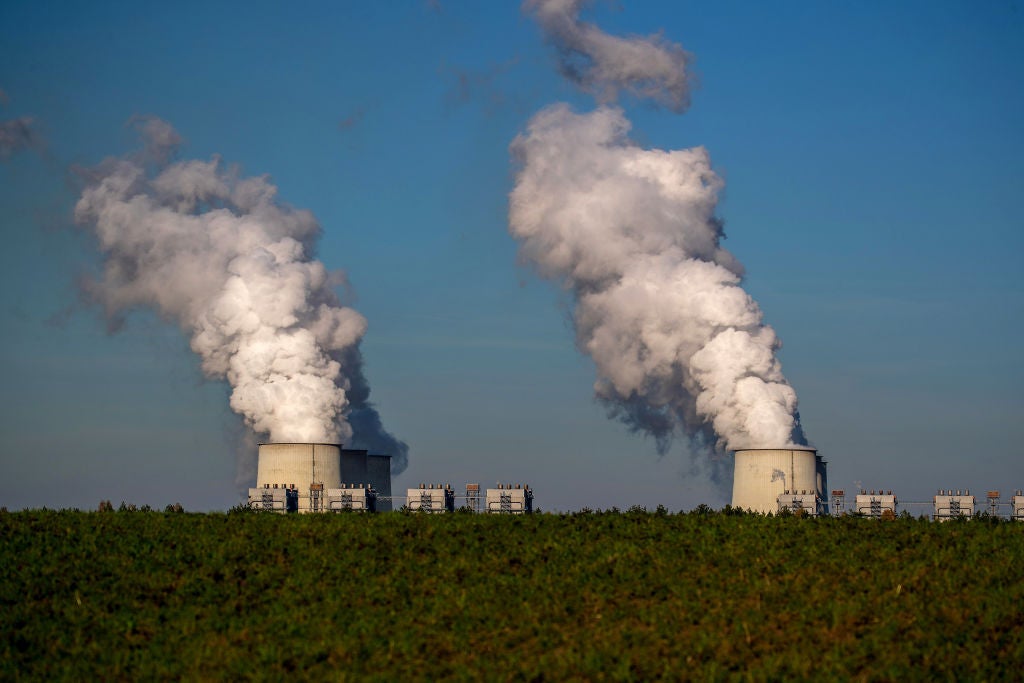
Despite four years of high oil prices, the International Energy Agency’s (IEA’s) Half-Yearly Oil Industry Report sees increasing market tightness beyond 2010, with OPEC spare capacity declining to minimal levels by 2012. A stronger demand outlook, together with project slippage and geopolitical problems, has led to downward revisions of OPEC spare capacity by 2mb/d in 2009.
OPEC spare capacity is expected to remain relatively constrained before 2009, when slowing upstream capacity growth and accelerating non-OECD demand once more push it down to uncomfortably low levels. It is possible that the supply crunch could be deferred – but not by much. The demand side of this analysis is based on country level GDP growth forecasts from the OECD and IMF, which amount to a global average of around 4.5% annually.
However, with GDP being the primary driver of this strong outlook, warnings from institutions that the risks to economic growth are negatively skewed indicate similar risks to our medium-term forecasts.
Lowering GDP growth to around 3.2% per year in 2008–12 reduces annual oil demand growth from 2.2% to 1.7% and the call on OPEC crude drops by around 2mb/d by 2012. But this merely postpones by a year the point at which oil demand growth surpasses growth in oil capacity, delaying the return of spare capacity by only a few years.
Any easing in tightness may be even less than this analysis suggests. Falling demand growth would have a price impact, which could both cushion some of the GDP related fall in demand and result in lower investment. Essentially, concerns over economic imbalances, for example, the current US housing market downturn, imply risks to the demand side. In the final analysis, though, a tight oil market reappears by the end of the forecast period.
See Also:
SUPPLY-SIDE RISK
How well do you really know your competitors?
Access the most comprehensive Company Profiles on the market, powered by GlobalData. Save hours of research. Gain competitive edge.

Thank you!
Your download email will arrive shortly
Not ready to buy yet? Download a free sample
We are confident about the unique quality of our Company Profiles. However, we want you to make the most beneficial decision for your business, so we offer a free sample that you can download by submitting the below form
By GlobalDataWhile we have now thoroughly revised our supply methodology to take account of a sustained high level of oilfield outages, further downside risk on the supply side is possible. Small changes to the rate of forecast global decline can have a big impact on the supply side. However, on balance we believe that above-ground risks are likely to exceed below-ground risks for the medium term.
But these supply risks are also balanced. Our OPEC capacity forecast assumes that there will be no net expansion of capacity in Iran, Iraq and Venezuela, and that the 0.5mb/d of Nigerian capacity that has been shuttered for a year will not come back on line during the forecast period.
Recent history would suggest that a conservative approach to OPEC capacity is justified. In recent years, effective OPEC capacity has averaged around 1mb/d below nominal capacity. But while such an allowance would provide a better indication of usable spare capacity, it is possible that some of the constraints on this inaccessible portion could change, lifting the available reserve.
The refining industry, which has struggled to match strong global demand for transportation fuels with installed capacity, has responded to market incentives. Investment in sophisticated refinery capacity is continuing apace. A significant improvement in refinery flexibility is foreseen.
Current refinery investment should increase the ability of the refining sector to process the heavy / sour OPEC spare capacity that has been of little interest to refineries recently.
It will be possible to upgrade more fuel oil into lighter transportation fuels, and this, combined with growing biofuels supplies, will mean that supply to meet demand growth in petrol and diesel should improve.
This has implications for prices and price differentials. If petrol and diesel demand can be more easily met, the high differentials to crude oil are likely to ease. Similarly, the ability to upgrade the heavy end of the barrel implies that the large discounts needed to clear surplus fuel oil production will become a thing of the past.
SUPPLY CONSIDERATIONS
It should be noted that the potential for distillate markets to ease over the next five years would be dwarfed by the impact of marine bunker fuels switching from fuel oil to distillate. A change on this scale would necessitate additional investment in upgrading capacity far above those that are currently forecast.
The IEA believes that the recent imbalances in the product market have had a significant knock-on effect on oil market volatility and outright prices. An easing of these tensions should reduce one of the price pressures that have been in place for the past few years, but it could be short-lived.
The IEA Medium Term Oil Market Report (MTOMR) product supply forecast hinges on the assumption that a number of large refining projects in the US will be approved in the coming months and that high-cost projects at the tail-end of the forecast do not slip further. If refining margins dip, further slippage is possible. Market dynamics suggest that it is unlikely that the refining industry will return to a long-term era of low refinery margins.
The oil market cannot be looked at in isolation. Oil looks like being extremely tight in five years time, but this also coincides with the prospects of even tighter natural gas markets at the turn of the decade. Over the past 25 years there has been a switch away from fuel oil towards natural gas. However, when natural gas supplies have been insufficient or there have been supply problems, fuel oil has been the natural substitute.
By the end of the decade, such flexibility may be constrained, producing upward pressures on all hydrocarbons. Slower-than expected GDP growth may provide a breathing space, but it is abundantly clear that if the path of demand does not change on its own, it may well be driven to change by higher prices.
DEMAND LEVEL
Global oil product demand is forecast to expand by 1.9mb/d or 2.2% per year on average, reaching 95.8mb/d by 2012 (see Figure 1). Growth is driven by stronger oil demand growth in non-OECD countries, particularly in Asia and the Middle East, where demand will grow more than three times faster than in OECD economies.
These countries are moving towards the threshold level of income where their consumers buy cars and energy-consuming white goods. They also tend to be large players in the energy-intensive processing of primary commodities and heavy industry.
OECD oil product demand is expected to rise from 49.6mb/d in 2007 to 52.1mb/d in 2012, driven by transportation fuel demand growth in North America, where consumption is poised to grow twice as fast as in Europe or the Pacific. In contrast, non-OECD oil product demand is poised to increase by, on average, 1.4mb/d or 3.6% per year over the next five years, coming close to the point at which it will surpass total oil consumption in the OECD.
While per capita consumption will remain well below that seen in the OECD, the developing world and emerging industrialised economies will see their share of world oil consumption rise from 42% of global oil demand to 46% by 2012. Transportation fuels will account for the bulk of demand growth in both OECD and non-OECD countries.
These fuels, which include petrol for cars, jet fuel / kerosene and gasoil / diesel, are expected to represent roughly 67% of the increase in OECD consumption over the forecast period, and about 60% of the rise in non-OECD demand.
While concern about possible downside risks to GDP forecasts seems to dominate, there are upside risks as well. In particular, given the higher income elasticity in the non-OECD regions, stronger than projected economic growth in these regions could actually boost oil demand growth.
Data uncertainties also tend to constitute an upside risk for forecasts. Historical demand-side data revisions have tended to be positive in both OECD and non-OECD countries, but they are a concern in non-OECD countries where data seldom provide a full view of market balances, particularly in strong demand growth countries such as China and India.
SUPPLY GROWTH
The MTOMR projects strong non-OPEC liquids supply growth in 2007–09, receding thereafter as the slate of verifiable investment projects diminishes. Total non-OPEC liquids supply growth to 2012 is pegged at 2.6mb/d (see Figure 1.).
Here too, upstream construction, drilling and service capacity will remain stretched, leaving forecasts prone to slippage due to cost overruns and project delays.These above-ground risks are still seen as greater than those posed by resource depletion and other below-ground factors.
We revise downwards the non-OPEC forecast by 0.8mb/d in 2011, partly reflecting slippage, but also incorporating a new 0.4mb/d contingency factor, reflecting a tendency for unscheduled field outages. Supply-side uncertainty is further exacerbated by increasing instances of resource nationalism and geopolitical risk, constraining the ability of the industry to produce the 3.0mb/d of new production needed each year to offset the effects of decline.
Overall, this leads to average non-OPEC supply growth of 1.0% between 2007 and 2012, 0.4% below the growth seen in the previous seven years and roughly half the rate of demand growth projections.
Non-OPEC growth is boosted initially by OPEC gas liquids and by biofuels, although substantial increases also derive from new crude supplies from the US Gulf of Mexico, Canadian oil sands, the former Soviet Union, Brazil and sub-Saharan Africa. These offset sharp declines expected from elsewhere in the US and Canada, Mexico, the North Sea and parts of Asia and the Middle East (see Figure 2.).
Annual OPEC NGL and condensate supply growth continues around the 8% pace seen so far this decade and adds a net 2.6mb/d to prevailing output, deferring an expected longer-term move to heavier/sourer global refinery feedstock supply.
OPEC crude capacity (constrained by ongoing security and investment issues in Iraq, Nigeria and Venezuela) is seen rising to 38.4mb/d in 2012 from a 2007 average of 34.4mb/d.
Some 70% of the increase comes from Saudi Arabia (+1.8mb/d), the UAE and Angola (+0.5mb/d each), with smaller amounts elsewhere. OPEC spare capacity, which has steadily recovered from minimal levels at the end of 2004 to almost 3.0mb/d at mid-2007 remains relatively constrained through to 2009, but declines sharply
thereafter.
These effects could be magnified if the effective level of spare capacity remains close to its historical 1mb/d below nominal levels. Substantially higher cash returns to shareholders stand in curious contrast to growing upstream supply tightness and an essentially unchanged exploration and production effort.
Nominal E&P expenditures are up, but higher costs have eroded their purchasing power commensurately. However, it is clear that there are other issues at work. In particular: access and contractual conditions (even in OECD countries) are deteriorating; hurdle rates for upstream investment may be too conservative (development costs have moved higher, albeit there are indications that cost inflation, is easing); labour, equipment and service sector constraints may reduce the potential for
expansion of the project base, at least through 2012; and the rise of consumer-country NOCs and independent exploration companies is eroding the market share of more risk averse IOCs, which endured years of lower returns after the oil price collapsed in the mid-1980s.





